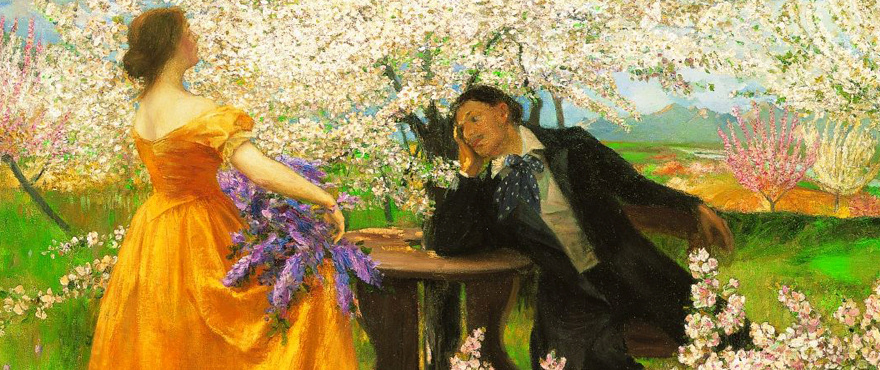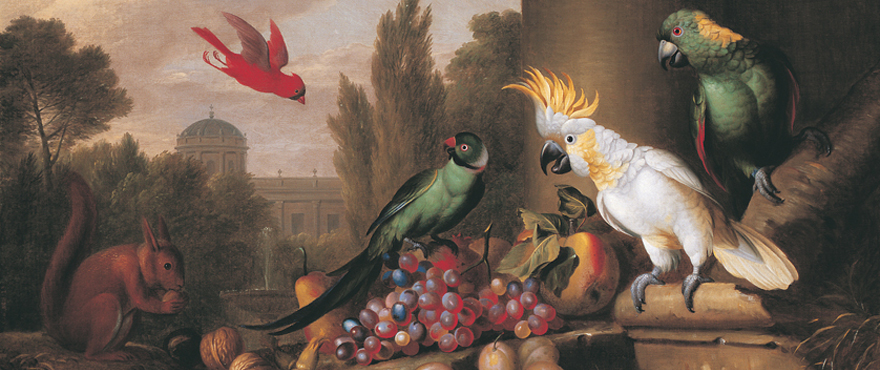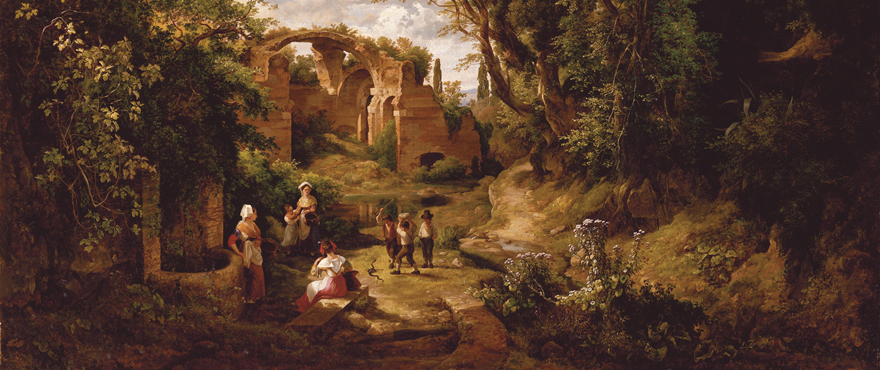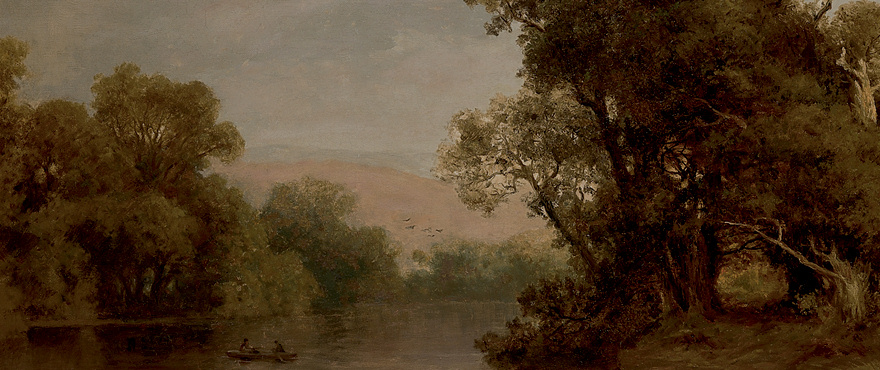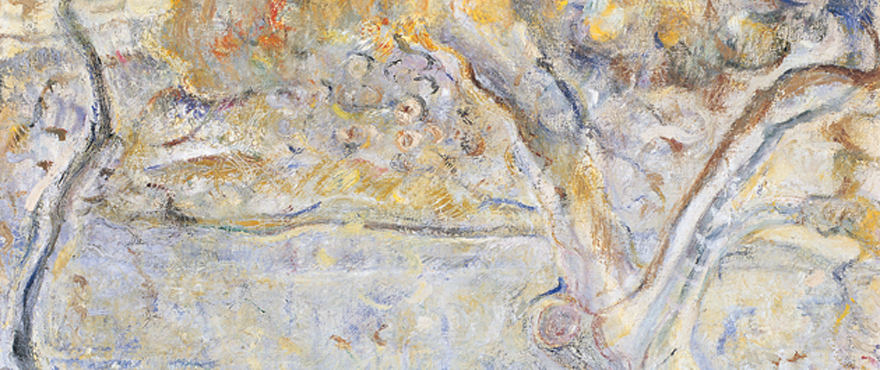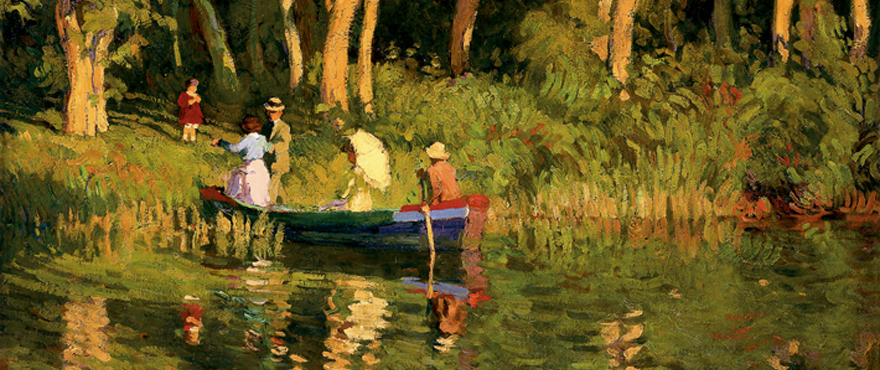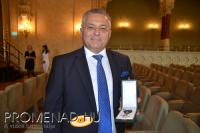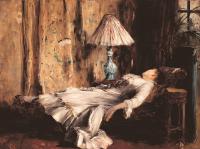
The Masters of Hungarian Realism
Continuously expanded, the Kovács Gábor Collection is one of the most prestigious private collections in Hungary. Following a number of exhibitions in Hungary and abroad, the collection is now introduced in Hajós with a special selection that guides the viewer through one of the most exciting periods in the history of Hungarian painting, the rise of realist painting, through the work of Mihály Munkácsy, László Paál, László Mednyánszky, Géza Mészöly, Sándor Bihari and others.
» more

19th Century Hungarian Paintings from the Kovács Gábor Collection
From 10 March, almost 100 works from the 400-piece collection of Gábor Kovács, founder of the Kovács Gábor Art Foundation, will be on view at the Castle of Lendava. The collection encompasses the history of Hungarian painting from the early 18th century to the middle of the 20th century.
» more
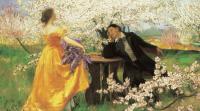
20th-century highlights in the Kovács Gábor Collection
The restaged exhibition of the Kovács Gábor Collection now focuses on pieces from the 20th century, to represent the emergence of modern art in Hungary through the work of such eminent artists as József Rippl-Rónai, János Vaszary and Sándor Bortnyik. During the period from the late 19th century until the Second World War, Hungarian art was almost completely in step with Western European art, particularly with French and German painting. Visitors can thus witness how French Impressionism gained ground in the country, see the appearance in Hungary of the isms that rose from the early 20th century (Fauvism, Cubism, Expressionism, Constructivism), and can finally observe the influence of the new, post-World War I trends, such as art deco, on Béla Kádár, or the appearance of classicizing tendencies in the work of Béla Kontuly. The exhibition presents the Collection’s focal points from the Nagybánya school, which marked the symbolic birth of the period, through the neo-Impressionist endeavours, to the avant-garde trends.
» more
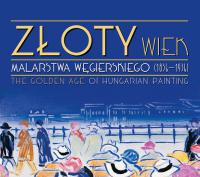
The Golden Age of Hungarian Painting (1836–1936)
Between 21 October, 2016 and 22 January, 2017, the Kovács Gábor Art Foundation presents an impressive exhibition in one of Europe’s most prestigious museums, the National Museum of Krakow. This comprehensive show is realized in cooperation with the Budapest Museum of Fine Arts – Hungarian National Gallery. The bulk of the some 90 paintings on view come from the internationally significant Kovács Gábor Collection, one of Hungary’s most important private collections, and from the rich holdings of the Hungarian National Gallery; others are on loan from the Hungarian National Museum, the Kiscell Museum, the Metropolitan Gallery, and the collection of the Kovács Gábor Art Foundation. The preeminent painters represented in this selection include Károly Markó the Elder, Bertalan Székely, Mihály Munkácsy, Lajos Gulácsy, József Rippl-Rónai and János Vaszary.
» more
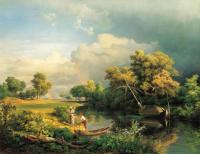
Markó and his followers
The art of Károly Markó the Elder (1793–1860) was shaped by the trends of Classicism and Romanticism: his approach was marked by both an espousal of the ideals of Antiquity and a desire to explore the artist’s psyche. His works also evince the influence of older movements, as there is, for instance, a conspicuous closeness to the heroic landscapes of the French Claude Lorrain. What he painted were, apparently, academic compositions that followed the traditions, while his sketches and studies feature all those new endeavours that marked the most recent developments in landscape painting, which was then emerging as a genre in its own right. It is believed that, like his contemporaries, he made his paper-based works on location, before the very motif represented, and went on to work out the entire composition in his studio. His works can be found, among other places, in the public collections of Vienna, Bratislava, Kosice, Barcelona, Copenhagen and Mexico City. The works on view were selected by Orsolya Hessky, mostly from the Kovács Gábor Collection, with the addition of three pieces from Cluj-Napoca’s Museum of Fine Arts, and paintings and graphic works from the Hungarian National Gallery.
» more
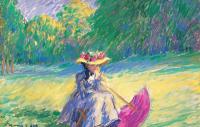
The Kovács Gábor Art Collection from Munkácsy to Tóth Menyhért
Opening on 22 May, the János Tornyai Museum in Hódmezővásárhely will host an exhibition of more than 100 works from the 400-strong collection of Gábor Kovács (founder of the Gábor Kovács Art Foundation), which spans the history of Hungarian painting from the 18th to the mid-20th century.
» more
The Retrospective Exhibition of Visual Ertist Zsuzsa Péreli
Opening speech of Gábor Kovács at the retrospective exhibition of Zsuzsa Péreli.
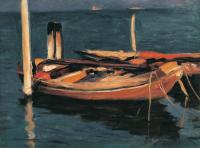
Koszta József: Csónakok, 1906 körül
Oeuvre Exhibition of József Koszta in Hódmezővásárhely
The art of József Koszta (1861-1949), one of the most individual of 20th-century Hungarian painters, has received regrettably little attention in recent decades. Apart from smaller displays, his last retrospective exhibit was at the National Salon in 1948, the year before his death, after he was among the first to receive the Kossuth Prize for an outstanding oeuvre.
A new monograph on Koszta by Anna Szinyei Merse, the exhibition’s chief curator, will also add new details to the currently held general view of the artist, and will offer documentary evidence that will clarify certain details.
» more
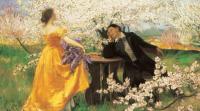
Csók, István: Spring Awakening, 1900
KOGART Exhibitions Tihany Opened
On 8 June the newest art venue of KOGART opened its doors with two beautiful exhibitions in the main street of the village at lake Balaton. Opening speech was held by Anikó Lévai.
An exquisite selection from the Gábor Kovács Art Collection, entitled Spring Awakening – The Birth of Modern Hungarian Painting in the Early 20th Century (temporary exhibition until 27 October), guides the visitor through what was probably the most exciting half a century in the history of Hungarian painting. In those decades from the end of the 19th century till the Second World War, Hungarian art developed almost in parallel with the painting of Western Europe, particularly of France and Germany.
The permanent exhibition The Attraction of Tihany – A Selection from the Works of Sculptor Miklós Borsos, based on the rich material of the KOGART collections, presents the art of one of the greatest sculptors of the 20th century, Miklós Borsos (1906–1990), who spent his summers in Tihany since 1943.
More information: www.kogarttihany.hu/en
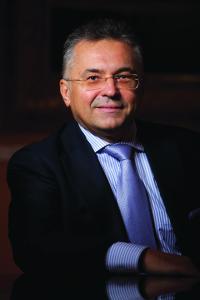
Gábor Kovács banker, art collector, philanthropist and founder of KOGART
Gábor Kovács banker, art collector, philanthropist and founder of KOGART
One of Hungary’s most successful businessmen, banker Gábor Kovács began a career at the Hungarian National Bank that would peak in the position of vice president at Citibank London in the second half of the 1980s. Upon returning home, he decided to indulge his desire for new challenges, and in 1991 founded his own company, which is now called Bankár Holding Plc. The same disposition led him to the world of visual art, the passion of collection, which was to become an essential and decisive experience, something that also opened new vistas for his ideas and activities.
“It was a tapestry, Zsuzsa Péreli’s Aequilibrium, that made me realize in 2002 that I had been looking for equilibrium in my life in the wrong dimension. As a banker, I mainly strove for liquidity, or horizontal, balance, when real balance can in fact be found vertically, between good and bad. Spiritual balance is far more important. A new world opened before me. What matters most is not the goal, but the way there, the gaining of the experience. Fate will set your direction; determining your own direction will lead to an arduous struggle—you have to fulfil the inevitable, your own fate. This is how causes have always found me: KOGART, the Pauline-Carmelite Monastery of Sopronbánfalva, the World Servers Foundation. I am proud to see how they have an effect on others.
We need to be open before new values that help us to preserve our physical and spiritual life, our planet. To safeguard our future, we must be resolute in the times to come to find those energies that help us to release these values, so that we can come up with answers for the new social and economic challenges of the 21st century.” (Gábor Kovács)
» more

Artists Also Profit from His Money
Born into a world of small farms, and having spent some time in one of the top positions of the City, Gábor Kovács knows the value of self-reliance—and that a little help can go a long way. In 2003 he founded the Kovács Gábor Art Foundation with a capital of HUF 3bn, setting out to support visual artists who stand a fair chance of standing on their own feet in time.
Now one of the 100 richest Hungarians, Gábor Kovács travelled a long way before he decided to devote a considerable portion of his wealth, worth over HUF 40bn, to the cause of art. ...
(From the book Márton-Koczó, Ildikó: Az 50 legjobb magyar üzleti döntés – és 15 a legrosszabbak közül. )
» more
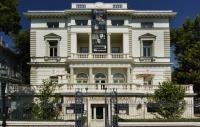
KOGART House
The Kovács Gábor Art Foundation
Our mission is a voluntarily assumed cause with the purpose of improving openness towards contemporary arts among the Hungarian public.
Our mission’s stated goals are the following:
1. To increase appreciation for the arts, especially the fine arts
2. To promote talented young artists
3. To create an internationally recognized contemporary art collection of primarily Hungarian works of art.
Our task is to convince prominent actors from the business sector to get behind this cause. We aim to encourage broader participation in social causes by the private sector and to establish a new model for art patronage.
We profess that a country must be recognized by the world and introduced to it through its arts and culture. We appreciate any form of support, cooperation, institutional collaboration or any business opportunity to help achieve our goals.
» more

